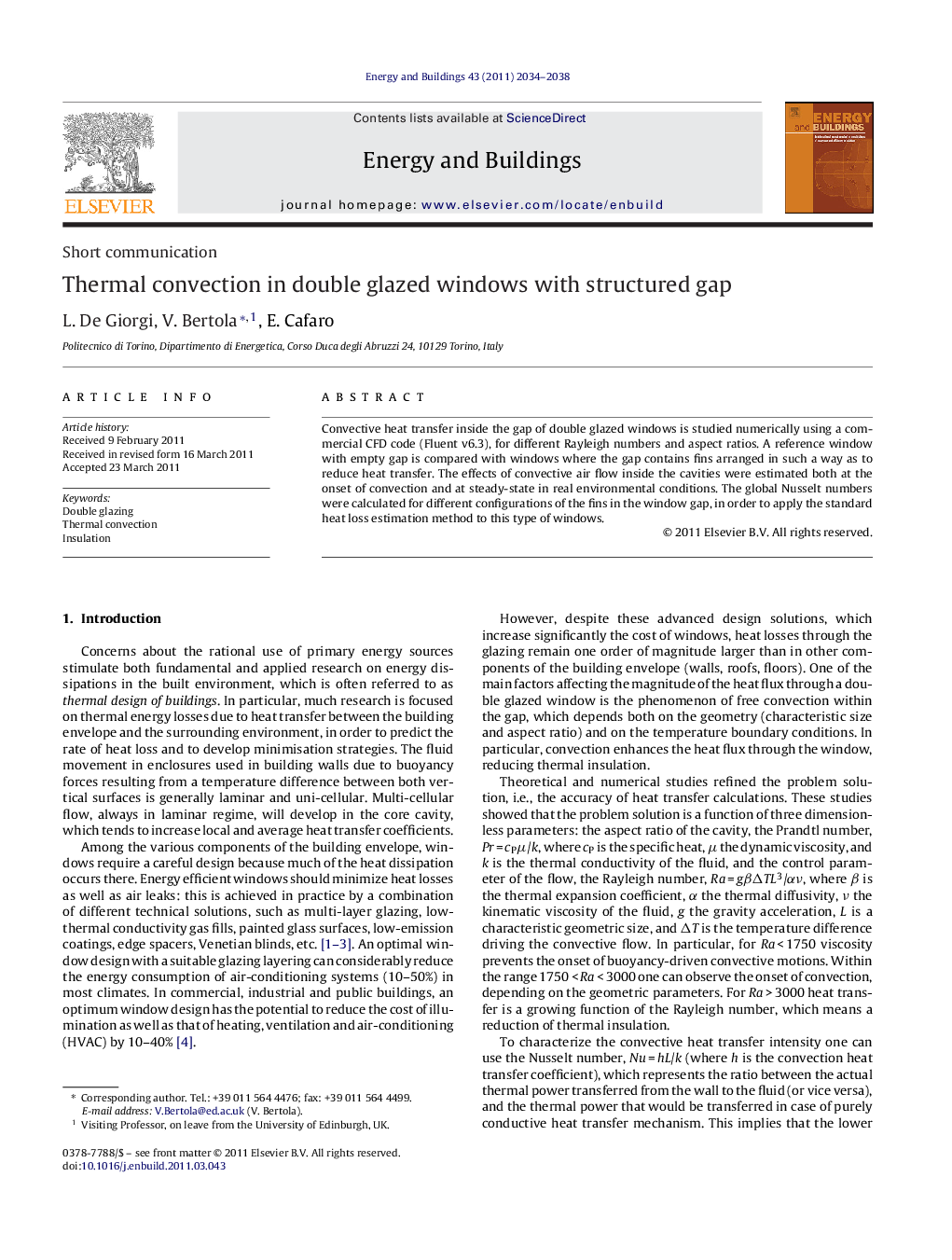| Article ID | Journal | Published Year | Pages | File Type |
|---|---|---|---|---|
| 264376 | Energy and Buildings | 2011 | 5 Pages |
Convective heat transfer inside the gap of double glazed windows is studied numerically using a commercial CFD code (Fluent v6.3), for different Rayleigh numbers and aspect ratios. A reference window with empty gap is compared with windows where the gap contains fins arranged in such a way as to reduce heat transfer. The effects of convective air flow inside the cavities were estimated both at the onset of convection and at steady-state in real environmental conditions. The global Nusselt numbers were calculated for different configurations of the fins in the window gap, in order to apply the standard heat loss estimation method to this type of windows.
► Improving thermal insulation of double glazed windows. ► Transparent fins are used to reduce convection in the gap. ► CFD simulations (Fluent) allow us to evaluate the velocity and temperature distributions. ► Total heat transfer coefficients obtained with two fin arrangements are compared with reference empty cavity.
